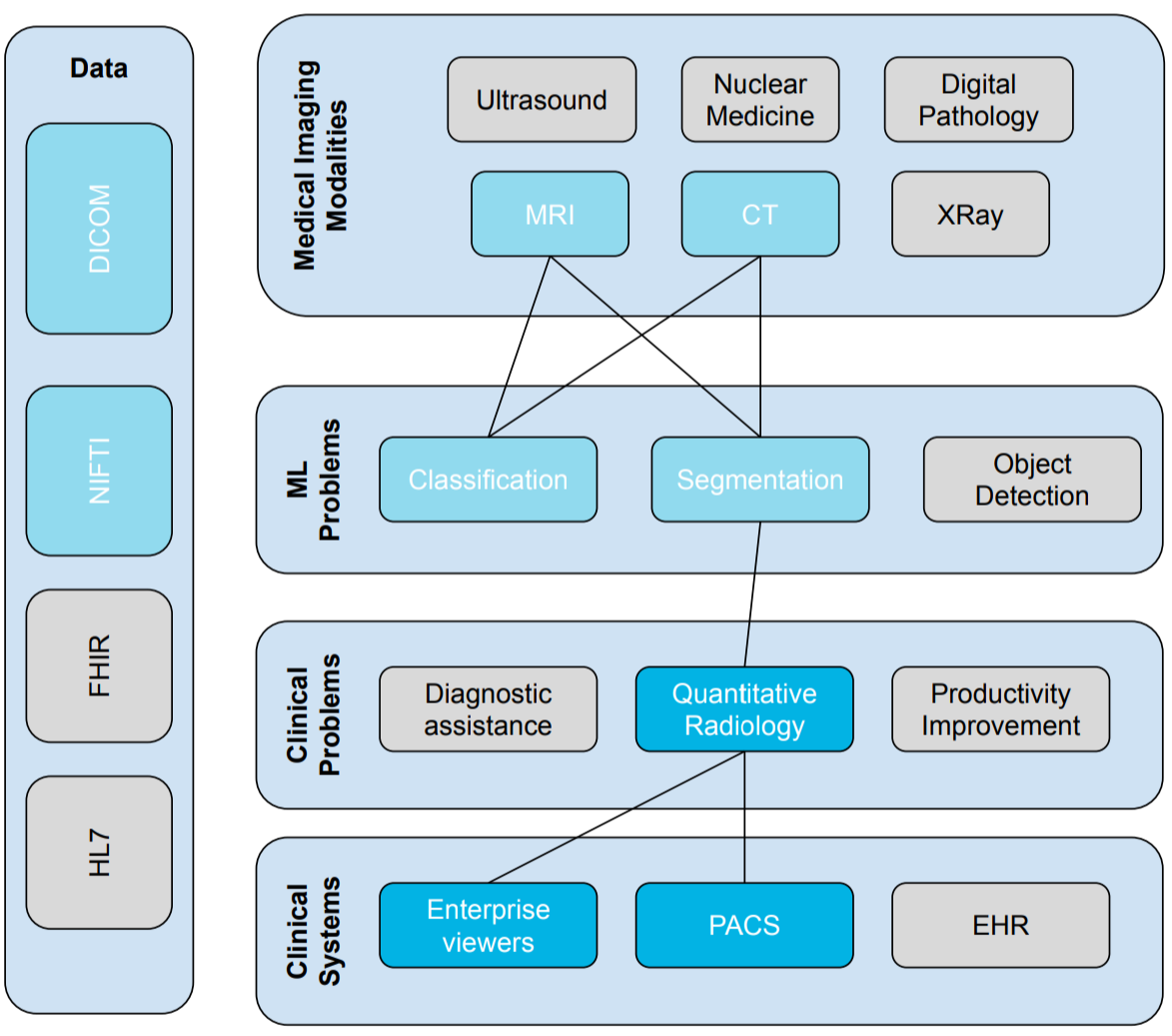01. Introduction
Heading
Introduction
ND320 C3 L4 01 Welcome To The Lesson & Overview
Summary of Overview + Lesson Outline
Conceptual map
This is our conceptual map, with content for the final lesson highlighted.
Conceptual Lesson Overview/Map

Lesson Overview (focus areas are highlighted with dark-blue color)
Summary
Lesson Summary
In our final lesson, we will focus on what it takes to build an AI algorithm like some of those we talked about in the previous lesson into a real-world system. We will discuss the following:
- Basics of DICOM networking
- How hospital networks operate and where would AI algorithms fit in
- Requirements for integration of AI algorithms
- Tools for simulating and debugging clinical environments:
- scripting via DCMTK
- OHIF - the zero-footprint medical image viewer
- A deeper-dive into Slicer for annotation
- Medical imaging viewer as radiologist’s tool - Mazen will show us how radiologists interact with viewers
- Medical Device Regulations with the US FDA as an example. We will talk about the regulation of medical devices by the government and how it applies to AI algorithms.
- Data privacy, HIPAA, and anonymization.
The content of this lesson is meant to give you an idea of what it takes to bring an AI system into the real world. This is where the job of data scientist typically ends and collaboration of cross-disciplinary teams is involved. However, your activities as an AI engineer should be informed by what happens with the system in the real world, and likewise, there are aspects of operation and deployment where the input of an AI engineer is instrumental. Here we try to help you understand what kinds of things to pay attention to.